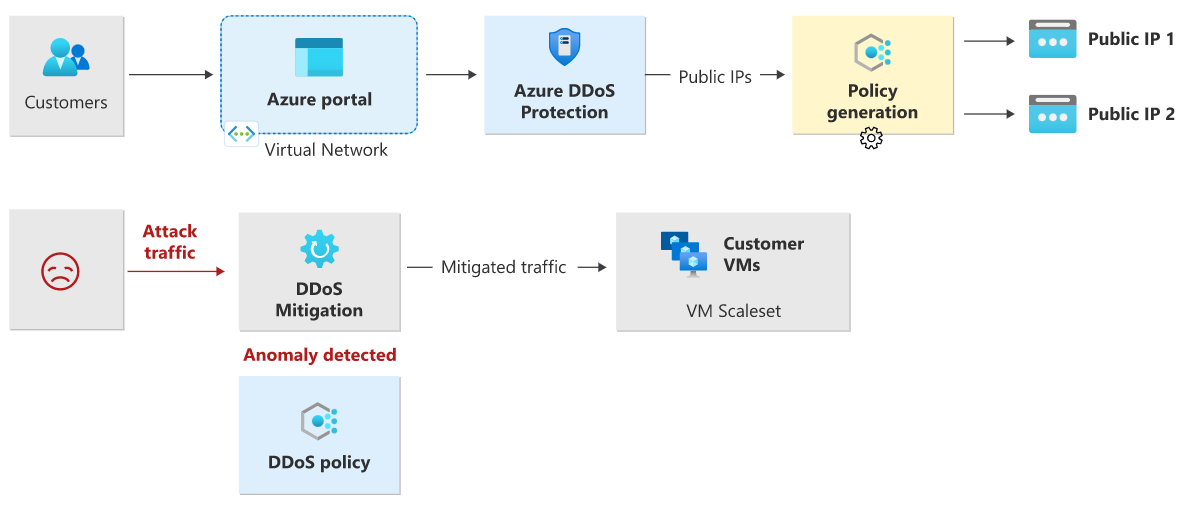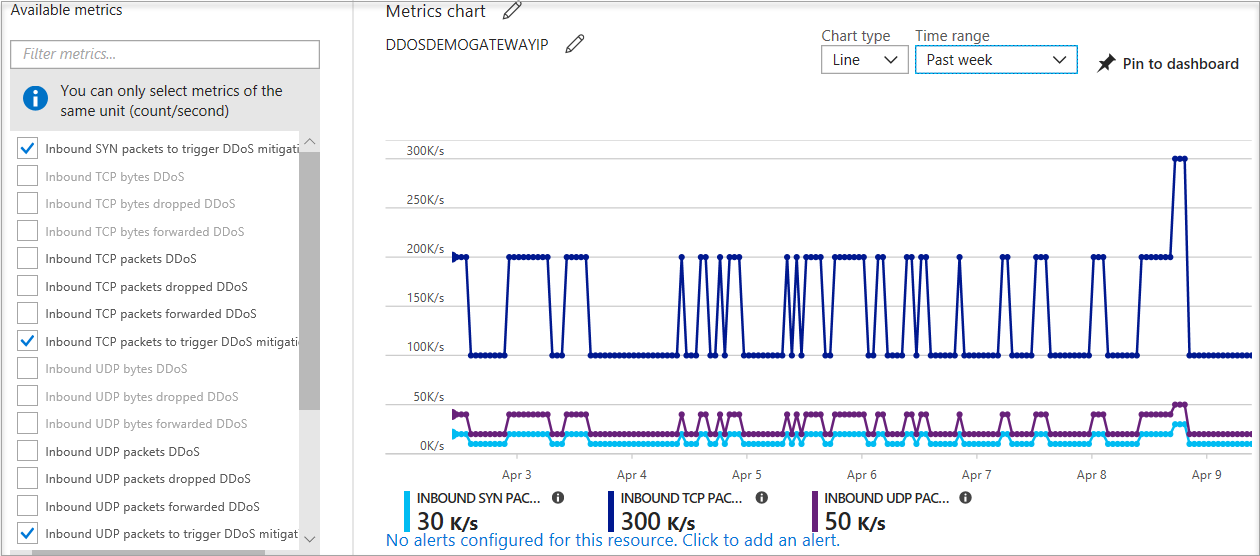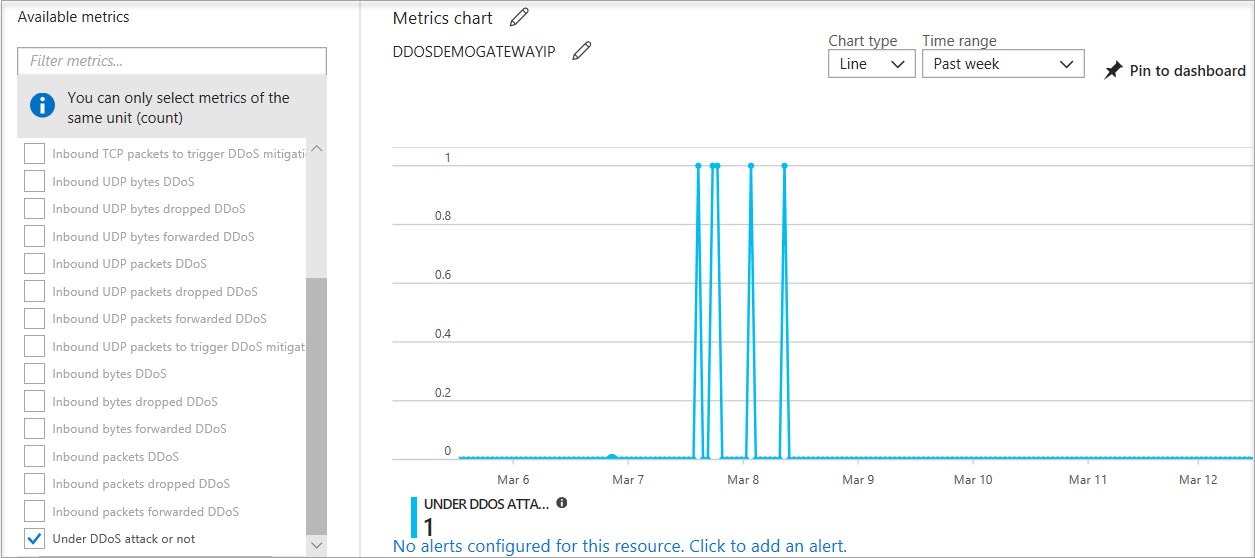Azure DDoS Protection features
Always-on traffic monitoring
Azure DDoS Protection monitors actual traffic utilization and constantly compares it against the thresholds defined in the DDoS Policy. When the traffic threshold is exceeded, DDoS mitigation is initiated automatically. When traffic returns below the thresholds, the mitigation is stopped.
During mitigation, traffic sent to the protected resource is redirected by the DDoS protection service and several checks are performed, such as:
- Ensure packets conform to internet specifications and are not malformed.
- Interact with the client to determine if the traffic is potentially a spoofed packet (e.g: SYN Auth or SYN Cookie or by dropping a packet for the source to retransmit it).
- Rate-limit packets, if no other enforcement method can be performed.
Azure DDoS Protection drops attack traffic and forwards the remaining traffic to its intended destination. Within a few minutes of attack detection, you are notified using Azure Monitor metrics. By configuring logging on DDoS Protection telemetry, you can write the logs to available options for future analysis. Metric data in Azure Monitor for DDoS Protection is retained for 30 days.
Adaptive real time tuning
The complexity of attacks (for example, multi-vector DDoS attacks) and the application-specific behaviors of tenants call for per-customer, tailored protection policies. The service accomplishes this by using two insights:
Automatic learning of per-customer (per-Public IP) traffic patterns for Layer 3 and 4.
Minimizing false positives, considering that the scale of Azure allows it to absorb a significant amount of traffic.
DDoS Protection telemetry, monitoring, and alerting
Azure DDoS Protection exposes rich telemetry via Azure Monitor. You can configure alerts for any of the Azure Monitor metrics that DDoS Protection uses. You can integrate logging with Splunk (Azure Event Hubs), Azure Monitor logs, and Azure Storage for advanced analysis via the Azure Monitor Diagnostics interface.
Azure DDoS Protection mitigation policies
In the Azure portal, select Monitor > Metrics. In the Metrics pane, select the resource group, select a resource type of Public IP Address, and select your Azure public IP address. DDoS metrics are visible in the Available metrics pane.
DDoS Protection applies three auto-tuned mitigation policies (TCP SYN, TCP, and UDP) for each public IP of the protected resource, in the virtual network that has DDoS enabled. You can view the policy thresholds by selecting the metric Inbound packets to trigger DDoS mitigation.
The policy thresholds are auto-configured via machine learning-based network traffic profiling. DDoS mitigation occurs for an IP address under attack only when the policy threshold is exceeded.
For more information, see View and configure DDoS Protection telemetry.
Metric for an IP address under DDoS attack
If the public IP address is under attack, the value for the metric Under DDoS attack or not changes to 1 as DDoS Protection performs mitigation on the attack traffic.
We recommend configuring an alert on this metric. You'll then be notified when there’s an active DDoS mitigation performed on your public IP address.





No comments:
Post a Comment